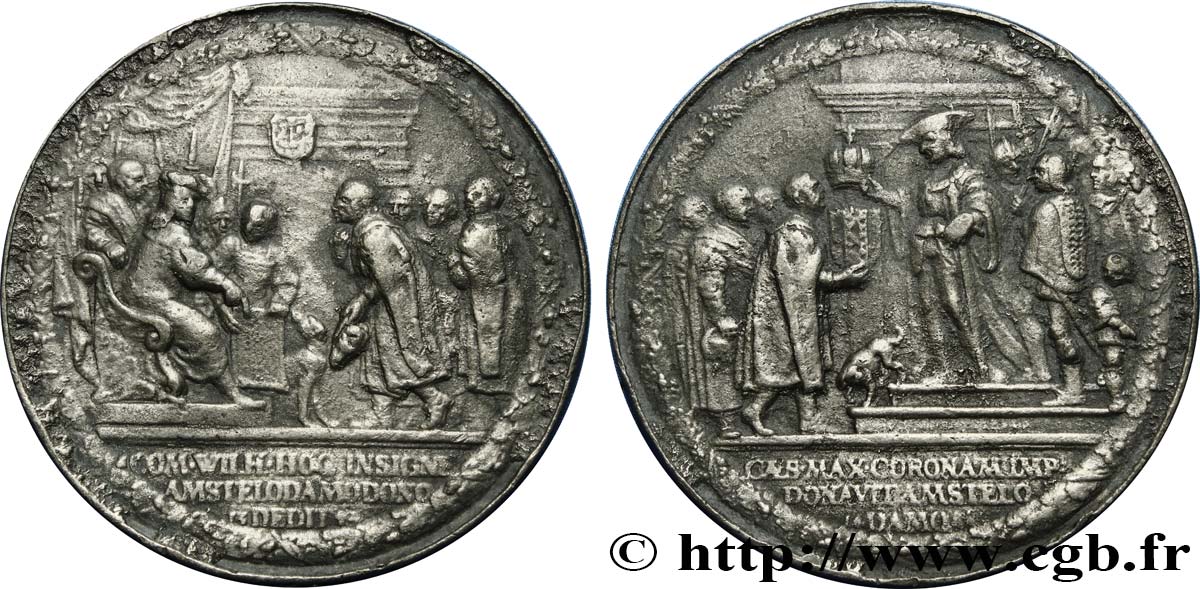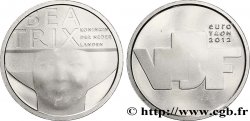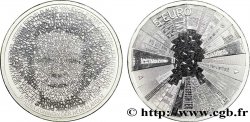E-auction 478-390191 - fme_412153 - NETHERLANDS Médaille de la Ville d’Amsterdam
Чтобы принять участие в торгах, вы должны войти в систему и стать подтвержденным участником аукциона. Войдите, чтобы сделать ставку. Ваш аккаунт будет подтвержден в течение 48 часов. Не ждите до закрытия торгов, чтобы зарегистрироваться.Сделав ставку на данный товар, вы вступаете в юридическое соглашение на покупку выбранного товара и нажатием кнопки «Сделать ставку» подтверждаете принятие вами условий интернет-аукционов cgb.fr.
Ставка может бить сделана только в полном эквиваленте евро. Торги закроются согласно времени, указанному в описании товара, все ставки, сделанные после закрытия торгов, учитываться не будут. Не следует откладывать предложение вашей ставки до последнего момента, так как система может не успеть обработать вашу заявку, и ваша ставка не будет принята. Более детальную информацию вы найдёте здесь: FAQ по интернет-аукционам.
БЕСПЛАТНО.
БЕСПЛАТНО.
| Оценить : | 250 € |
| Цена : | 52 € |
| Максимальная предлагаемая цена : | 52 € |
| Конец торгов : | 13 June 2022 18:08:00 |
| Участников : | 6 Участников |
Тип Médaille de la Ville d’Amsterdam
Дата: 1650
Монетный двор / Город: Pays-Bas, Amsterdam
Металл: tin
Диаметр: 79 mm
Ориентация осей монеты: 12 h.
Вес: 118 g.
Комментарии о состоянии
Fonte ancienne, en étain (?) avec de beaux reliefs un peu émoussés et une patine grise assez homogène
Лицевая сторона
Аверс: легенда: COM WIHL. HOC INSIGNE / AMSTELODAMODONO / 13 DEBIT 42.
Аверс: описание: Dans une couronne de chêne, Guillaume V assit, présentant les nouvelles armes aux bourgeois de la ville alors qu'un chien le regarde ; signature sous le trône ; dans le fond, les vieilles armes d’Amsterdam.
Обратная сторона
Реверс: легенда: CAES. MAX. CORONAM IMP: / DONAVOT AMSTELO / 14 DAMO 88.
Реверс: Описание: Dans une couronne de feuilles de chêne, Maximilien présente la couronne impériale à un bourgeois qui tient le bouclier d'armes ; à droite, un garçon gesticule chez un chien aux pieds de l'empereur.
Комментарий
Le dessin de cette médaille, conservé à Leide est accompagné d’un texte qui situe les scènes représentées sur cette médaille en 1382 au droit et 1488 au revers.
Cet exemplaire est un moulage effectué au XVIII ou XIXe siècle, à partir d’un original ancien ou d’un surmoulage. Jean-Marie Darnis pense que sa réalisation “ne remonte guère au delà du XIXe siècle, peut être de la Restauration, coïncidant avec la demande de reproductions devenues à la mode par cette nouvelle génération de collectionneurs”.
Le chien au droit et au revers est une référence aux vieux blason d'Amsterdam avec le navire sur lequel un chien a été représenté, réalisé à l'occasion de l'inauguration de la nouvelle mairie d'Amsterdam.
La médaille originale, daterait de 1650-1655 et serait le fruit du graveur Pieter Van Abeele (signée P.V.ABEELE.F sur le dais au droit). Pieter van Abeele est né en 1608 à Middelbourg et mort le 21 février 1684 à Amsterdam. C’est un médailleur néerlandais ; il devient membre de la guilde des orfèvres d'Amsterdam en 1634..
The drawing of this medal, preserved in Leiden, is accompanied by a text that places the scenes represented on this medal in 1382 on the obverse and 1488 on the reverse. This example is a cast made in the 18th or 19th century, from an old original or an overcast. Jean-Marie Darnis believes that its creation “does not go back much further than the 19th century, perhaps from the Restoration, coinciding with the demand for reproductions that had become fashionable among this new generation of collectors.” The dog on the obverse and reverse is a reference to the old coat of arms of Amsterdam with the ship on which a dog was depicted, made on the occasion of the inauguration of the new town hall of Amsterdam. The original medal, would date from 1650-1655 and would be the work of the engraver Pieter Van Abeele (signed PVABEELE.F on the canopy on the obverse). Pieter van Abeele was born in Middelburg in 1608 and died on 21 February 1684 in Amsterdam. He was a Dutch medalist; he became a member of the Amsterdam goldsmiths' guild in 1634.
Cet exemplaire est un moulage effectué au XVIII ou XIXe siècle, à partir d’un original ancien ou d’un surmoulage. Jean-Marie Darnis pense que sa réalisation “ne remonte guère au delà du XIXe siècle, peut être de la Restauration, coïncidant avec la demande de reproductions devenues à la mode par cette nouvelle génération de collectionneurs”.
Le chien au droit et au revers est une référence aux vieux blason d'Amsterdam avec le navire sur lequel un chien a été représenté, réalisé à l'occasion de l'inauguration de la nouvelle mairie d'Amsterdam.
La médaille originale, daterait de 1650-1655 et serait le fruit du graveur Pieter Van Abeele (signée P.V.ABEELE.F sur le dais au droit). Pieter van Abeele est né en 1608 à Middelbourg et mort le 21 février 1684 à Amsterdam. C’est un médailleur néerlandais ; il devient membre de la guilde des orfèvres d'Amsterdam en 1634..
The drawing of this medal, preserved in Leiden, is accompanied by a text that places the scenes represented on this medal in 1382 on the obverse and 1488 on the reverse. This example is a cast made in the 18th or 19th century, from an old original or an overcast. Jean-Marie Darnis believes that its creation “does not go back much further than the 19th century, perhaps from the Restoration, coinciding with the demand for reproductions that had become fashionable among this new generation of collectors.” The dog on the obverse and reverse is a reference to the old coat of arms of Amsterdam with the ship on which a dog was depicted, made on the occasion of the inauguration of the new town hall of Amsterdam. The original medal, would date from 1650-1655 and would be the work of the engraver Pieter Van Abeele (signed PVABEELE.F on the canopy on the obverse). Pieter van Abeele was born in Middelburg in 1608 and died on 21 February 1684 in Amsterdam. He was a Dutch medalist; he became a member of the Amsterdam goldsmiths' guild in 1634.








 Cообщить об ошибке
Cообщить об ошибке Распечатать страницу
Распечатать страницу Отправить мой выбор
Отправить мой выбор Задать вопрос
Задать вопрос Consign / sell
Consign / sell
 Информация
Информация









